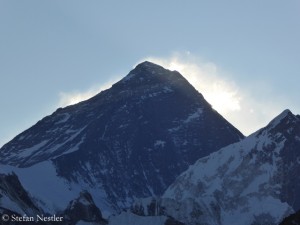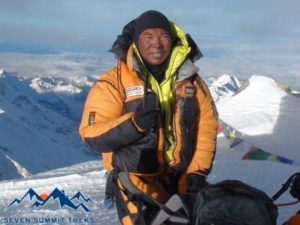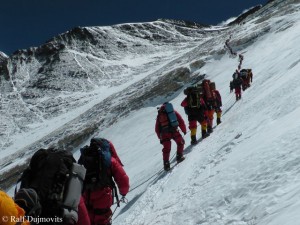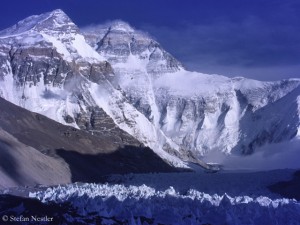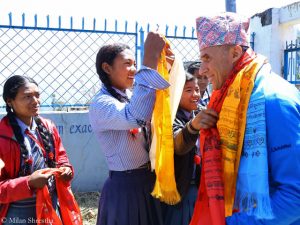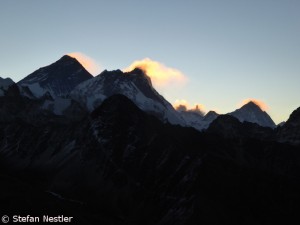Mingma Sherpa: “We don’t need rules for Everest”
No question, Seven Summits Treks polarize. On the one hand, there are the critics who accuse the Nepalese expedition operator of attracting clients with dumping prices at the cost of safey. On the other hand, there are apparently many climbers who, despite all critical voices, book at Seven Summits Treks. No matter on which eight-thousander, almost always the agency of Mingma Sherpa crops up with the biggest expedition team. “I am very successful in my business because my clients believe in me,” the head of the company tells me in Kathmandu. In 2011, Mingma was the first Nepalese to complete his collection of the 14 eight-thousanders. “I wanted to show that we Sherpas are not only good porters or mountain guides, but also real climbers.” In 2013, his younger brother Chhang Dawa Sherpa followed the example of Mingma. They are the only brothers so far who stood on all 14 eight-thousanders. Chhang Dawa also works as an expedition manager at Seven Summit Treks.
“Everest chance for all”
Mingma defends himself against the accusation that he distorts prices by offering cheap expeditions. “I do not dream of doing the big business,” claims the 39-year-old. “I offer cheaper prices because I want to give many more people, who don’t have enough money, the chance to climb Everest. When I myself tackled the eight-thousanders, I also had little money.” The Sherpa also doesn’t want to stand for saving money at the cost of safety. “If someone dies, it is either due to the conditions on the mountain or the physical condition of the climbers. It does not matter if they paid $ 20,000 or $ 100,000.”
“More staff, more safety”
Even the big size of his expedition teams doesn’t cause less safety, means Mingma. “If I have only three members and three Sherpas on the mountain, I can hardly do a rescue operation in case of emergency,” says the head of Seven Summits Treks. “But I have 100 clients and 100 Sherpas on site. If anything happens, I have enough manpower to rescue climbers. My clients are safer than those who have spent $ 100,000.”
“Not everyone is a Moro or Steck”
Meanwhile, his agency offers also an Everest expedition for $ 130,000. “There are people who don’t care of money,” says Mingma. “They have the money, we have the service. We offer in those expeditions more in every respect.” One or two clients booked this luxury version this year. On their website, Seven Summits Treks had described the members’ profile as follows: “You have strong economics to compensate for your old age, weak physical condition or your of risks.” Mingma sees nothing reprehensible in this: “We have enough time on the mountain to check them on our way from Camp 1 to Camp 4. Then we know who can go to the summit and who cannot. If people are in bad condition, we advise them to go back and try it next time.”
I argue that such people do not belong to Everest due to their lack of mountaineering skills. “Not all clients of commercial expeditions are alpinists like Simone Moro or Ueli Steck,” replies Mingma. “They don’t need to have climbed a seven-thousander. Two or three 6,000-meter-peaks are enough experience for Everest. We have plenty of time up to Camp 4 to teach them.”
“1,000 an more at the same time, no problem”
The boss of Seven Summit Treks doesn’t favour rules for the highest mountain on earth anyway. “Everyone wants to go to Everest,” says Mingma. “If they have enough energy, they can go. I think, it’s better that everything is open. We live in the 21st century, people know what they are doing.“ It doesn’t cause any problem if hundreds of climbers are en route on Everest at the same time, means Mingma Sherpa. “We can manage an unlimited number of climbers on the mountain. If there are more than 1,000, we just supply different routes with fixed ropes. Then it’s no problem for them climbing there at the same time.”




